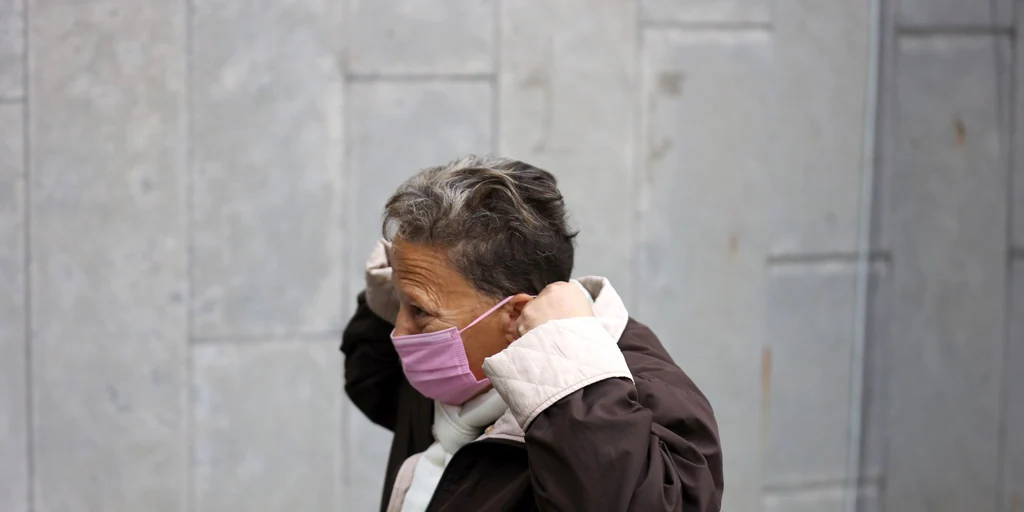The Ministry of Health and the autonomous communities have not reached an agreement this Thursday in the Public Health Commission to approve the document with which it was intended to deal with the arrival of respiratory viruses such as the flu or Covid-19 to avoid the saturation of health centers and hospitals during the fall and winter season, so that the return of the mask, among other things, remains up in the air, as this media has learned from sources at the meeting. The same sources indicate that they will meet again in an extraordinary manner in the month of November to discuss the strategy. As ABC announced this Wednesday, in the document that has been debated without reaching a consensus, the ministry proposed establishing four risk scenarios based on the levels of virus transmission.
The Minister of Health, Mónica García, had already announced that her department was working on a document similar to the Covid traffic light also applied to the flu. The ministry thus contemplated the return of the mask to combat respiratory infections. The director of Public Health of the Community of Madrid, Elena Andradas, assured after the meeting that the ministry’s proposal “suffers from a lack of technical criteria and a certain improvisation” because so far there is no information that allows it to be compared between the autonomous communities to be able to evaluate the risk simultaneously. The regions, Andradas said, are prepared to face this time of respiratory viruses with measures that they have been applying for years.
The document presented by the Ministry of Health, continued the director of Public Health of the Community of Madrid, needs “a thorough review of the methodology”, which is why she does not believe that these common criteria will be agreed upon for this season. Furthermore, Elena Andradas has referred to the fact that the proposal “exudes a certain nostalgia” for the measures that were adopted during the Covid-19 pandemic, but the situation, she said, is “completely different”, so the actions must be adapted. to the current situation.
For his part, the Secretary of State for Health, Javier Padilla, has stated that it has been the communities governed by the PP that have “stopped the document drafted by their own technicians to have for the first time a common action plan against the respiratory virus epidemic. “The irresponsibility is enormous and I hope they reconsider,” he said in a message published on his ‘X’ account.
Thus, the document that has not yet been agreed upon establishes four scenarios based mainly on data from the Surveillance System for Acute Respiratory Infections in Spain (Sivira), which measures the incidence of these viruses at each moment, although they will also be modified at any time. depending on other indicators such as hospital and ICU occupancy or casualties due to respiratory viruses. In scenario 0 the risk is “inter-epidemic or basal”, in scenario 1 the transmissibility is low or moderate, in scenario 2, high, and in scenario 3 the level of transmission of respiratory infections is considered very high or even “pandemic.”
At any level, self-isolation is recommended for people who have symptoms. Also the use of the mask, which is reinforced as the risk grows, increasing the situations in which it will have to be worn. In scenario 1, therefore, with low transmission, it is recommended to use it for health personnel, patients and companions in the “vulnerable areas” of health centers, such as chemotherapy rooms or transplant units. Also from this level onwards, it will be advocated to favor teleworking for people who have symptoms compatible with respiratory viruses.
In supermarkets, buses…
The use of the mask would increase in scenario 2, when the risk is already considered high, so that it should be used by both health workers and patients and their companions in the waiting rooms of health centers and hospital emergencies. The recommendation would also be extended to people at risk of developing serious complications, such as the elderly or chronically ill, so that they also wear it in indoor spaces such as supermarkets, stores or public transport, as well as in cinemas, theaters, concert halls, gyms, dance halls or at large outdoor events.
At this level, the permanent use of face masks would also be advised for all workers in centers for the elderly and vulnerable people, but not for patients and residents, so that the obligation would be assessed generally based on the situation. each center.
In addition, the document contemplates that if the last scenario is reached, in which the risk is considered very high or “pandemic”, “additional and exceptional measures” may be adopted to control the situation.
Protective equipment
The document also emphasizes that the contingency plans of health centers must be reviewed to ensure their care capacity in all scenarios, as well as reserves of personal protective equipment. To this end, these protocols must contemplate continuity plans both to deal with the losses of health and non-health personnel and the increase in cases of respiratory infections that require reorganizing services.
